ULTIMATE Early French Masterworks from the Hyman Collection Édouard Baldus Follow La Madeleine likely 1852-1855 Untrimmed salt print from a waxed paper negative, mounted to the original album leaf. Image 35 x 44.5 cm (13 3/4 x 17 1/2 in.) Sheet 36.8 x 45 cm (14 1/2 x 17 3/4 in.) Mount: 44.6 x 56.6 cm (17 1/2 x 22 1/4 in.) Titled ‘Madeleine Paris’ in French and numbered ‘1’ twice in unidentified hands in pencil on the mount. This work is the earliest known print and the only known untrimmed print of this image to date. Other known prints of this image are trimmed, as well as signed, titled and numbered in the negative, including one held at Musée Carnavalet, Paris, which was reproduced in The Metropolitan Museum of Art’s 1994 monograph on Baldus and there dated mid-1850s.
Condition Report Sign up or Log in Provenance Originally in an album of early French photographs, Private Collection, Lyon, since 1870s Galerie de Chartres, Edouard Baldus (1813-1889): Important ensemble de photographies provenant d'une famille lyonnaise , 13 May 2006, lot 1 The Hyman Collection, London Literature M. Daniel, The Photographs of Édouard Baldus , New York: The Met, 1994, pl. 55, Musée Carnavalet’s trimmed print Catalogue Essay ‘Baldus’ working methods, too, were those of an imperial dramatist. A master printer, his proofs were more richly achieved than any of his contemporaries had ever seen.’ André Jammes and Eugenia Parry Janis, The Art of French Calotype Painter-turned-photographer Édouard Baldus was celebrated in his time for his large-format architectural views of Paris, of which this matt salt print depicting the Madeleine is an exceptional example. This photograph was likely taken in 1852-1855, during which time Baldus photographed the main monuments of Paris for the Académie des Beaux-Arts. Other known prints of this image are trimmed, as well as signed, titled and numbered in the negative, including a print held at the Musée Carnavalet in Paris that was reproduced in Malcolm Daniel’s 1994 monograph on Baldus. The work offered here was printed by Baldus as a proof print before he had signed, titled and numbered his negative, making it the earliest known print of this image to date. Baldus started experimenting with paper photography in the late 1840s, developing his own refinement to the calotype process, which enabled him to create images of unequalled sharpness, as evidenced in this print. In 1851 Baldus was one of five photographers, along with Bayard (lot 7), Le Gray, Le Secq and Mestral, selected by the Commission des monuments historiques to document France’s architecture. According to Malcolm Daniel, the Mission héliographique put Baldus in direct contact with architects, stimulating him to absorb their aesthetic preferences, which had a significant influence on his work. ‘Over and over again his subjects dominate the frame,’ Daniel comments. ‘He isolated the monument visually from its immediate surroundings, and he favored a horizon line that minimized distortion of the principal lines of architecture’ ( The Photographs of Édouard Baldus , p. 106). These visual devices are all present in this magnificent representation of the Madeleine. Ernest Lacan (1828-1879), editor of La Lumière , Europe’s first photography journal, wrote in the autumn of 1853 that he had observed ‘rare perfection,’ ‘tonal beauty,’ and ‘incredible fineness of detail’ in Baldus’s photographs of Paris. This salt print was originally in an album of early French photographs, mainly by Baldus and his contemporary Pierre Manguin that had been in the same private collection in Lyon since the 1870s. According to the family archive, a great grand-uncle who was an architect had corresponded with Manguin, who had initially trained as an architectural draftsman. The present lot was the first page in an album of 33 pages, which included other images by Baldus, such as Maison Carrée à Nîmes and Notre Dame de Paris . We extend our sincere thanks to Anne de Mondenard, Chief Curator of Heritage, Photographs and Digital Images at the Musée Carnavalet for her expertise and assistance in our research. Read More
ULTIMATE Early French Masterworks from the Hyman Collection Édouard Baldus Follow La Madeleine likely 1852-1855 Untrimmed salt print from a waxed paper negative, mounted to the original album leaf. Image 35 x 44.5 cm (13 3/4 x 17 1/2 in.) Sheet 36.8 x 45 cm (14 1/2 x 17 3/4 in.) Mount: 44.6 x 56.6 cm (17 1/2 x 22 1/4 in.) Titled ‘Madeleine Paris’ in French and numbered ‘1’ twice in unidentified hands in pencil on the mount. This work is the earliest known print and the only known untrimmed print of this image to date. Other known prints of this image are trimmed, as well as signed, titled and numbered in the negative, including one held at Musée Carnavalet, Paris, which was reproduced in The Metropolitan Museum of Art’s 1994 monograph on Baldus and there dated mid-1850s.
Condition Report Sign up or Log in Provenance Originally in an album of early French photographs, Private Collection, Lyon, since 1870s Galerie de Chartres, Edouard Baldus (1813-1889): Important ensemble de photographies provenant d'une famille lyonnaise , 13 May 2006, lot 1 The Hyman Collection, London Literature M. Daniel, The Photographs of Édouard Baldus , New York: The Met, 1994, pl. 55, Musée Carnavalet’s trimmed print Catalogue Essay ‘Baldus’ working methods, too, were those of an imperial dramatist. A master printer, his proofs were more richly achieved than any of his contemporaries had ever seen.’ André Jammes and Eugenia Parry Janis, The Art of French Calotype Painter-turned-photographer Édouard Baldus was celebrated in his time for his large-format architectural views of Paris, of which this matt salt print depicting the Madeleine is an exceptional example. This photograph was likely taken in 1852-1855, during which time Baldus photographed the main monuments of Paris for the Académie des Beaux-Arts. Other known prints of this image are trimmed, as well as signed, titled and numbered in the negative, including a print held at the Musée Carnavalet in Paris that was reproduced in Malcolm Daniel’s 1994 monograph on Baldus. The work offered here was printed by Baldus as a proof print before he had signed, titled and numbered his negative, making it the earliest known print of this image to date. Baldus started experimenting with paper photography in the late 1840s, developing his own refinement to the calotype process, which enabled him to create images of unequalled sharpness, as evidenced in this print. In 1851 Baldus was one of five photographers, along with Bayard (lot 7), Le Gray, Le Secq and Mestral, selected by the Commission des monuments historiques to document France’s architecture. According to Malcolm Daniel, the Mission héliographique put Baldus in direct contact with architects, stimulating him to absorb their aesthetic preferences, which had a significant influence on his work. ‘Over and over again his subjects dominate the frame,’ Daniel comments. ‘He isolated the monument visually from its immediate surroundings, and he favored a horizon line that minimized distortion of the principal lines of architecture’ ( The Photographs of Édouard Baldus , p. 106). These visual devices are all present in this magnificent representation of the Madeleine. Ernest Lacan (1828-1879), editor of La Lumière , Europe’s first photography journal, wrote in the autumn of 1853 that he had observed ‘rare perfection,’ ‘tonal beauty,’ and ‘incredible fineness of detail’ in Baldus’s photographs of Paris. This salt print was originally in an album of early French photographs, mainly by Baldus and his contemporary Pierre Manguin that had been in the same private collection in Lyon since the 1870s. According to the family archive, a great grand-uncle who was an architect had corresponded with Manguin, who had initially trained as an architectural draftsman. The present lot was the first page in an album of 33 pages, which included other images by Baldus, such as Maison Carrée à Nîmes and Notre Dame de Paris . We extend our sincere thanks to Anne de Mondenard, Chief Curator of Heritage, Photographs and Digital Images at the Musée Carnavalet for her expertise and assistance in our research. Read More

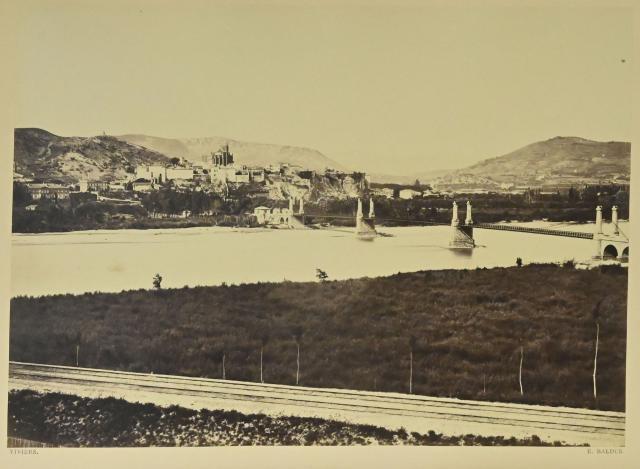

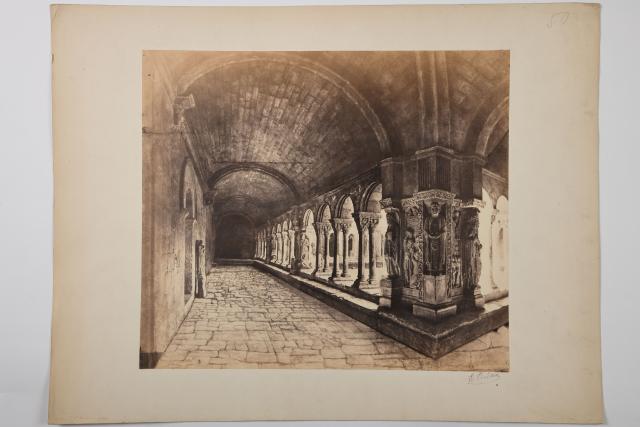
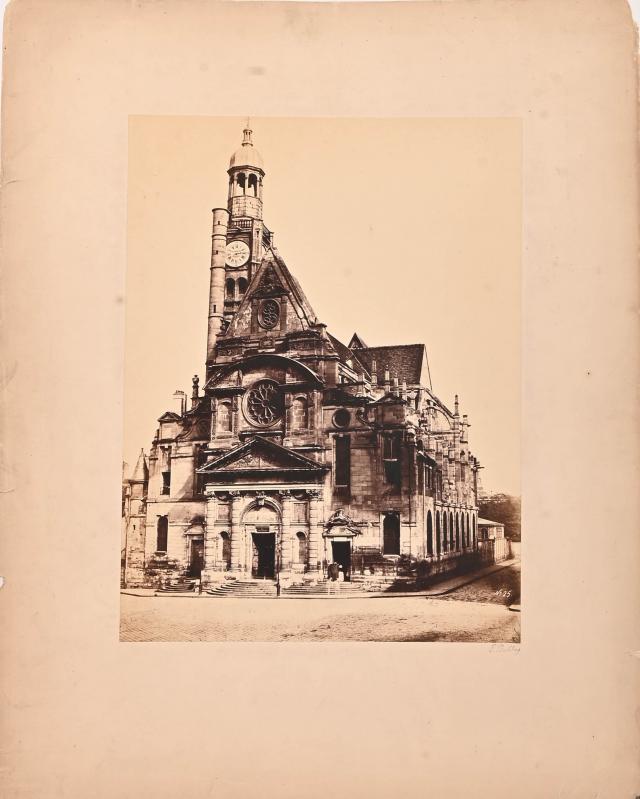






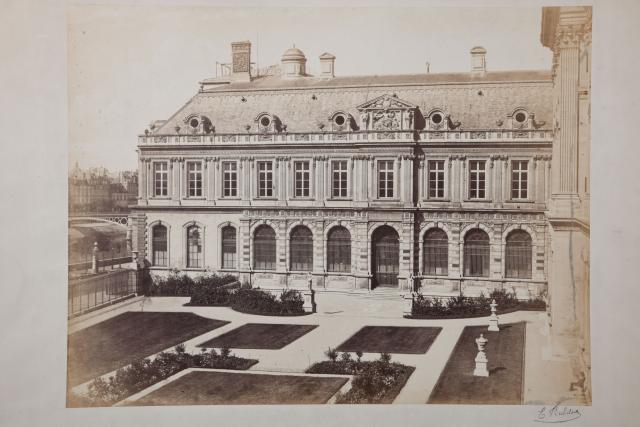
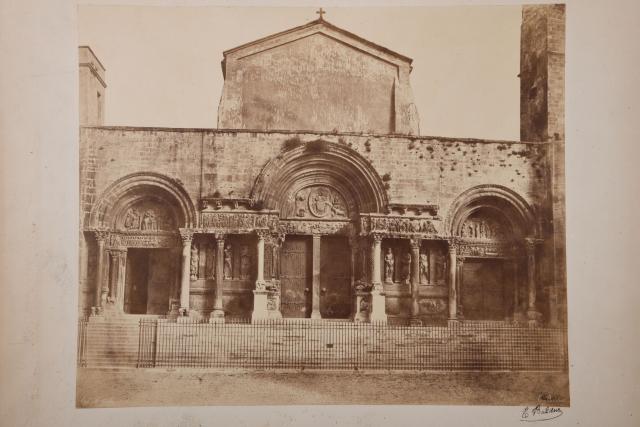
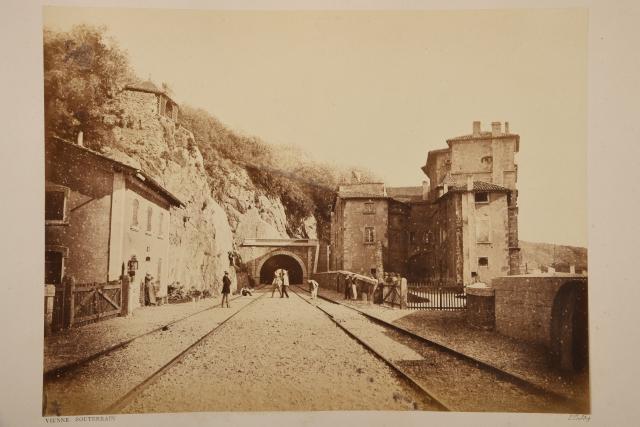
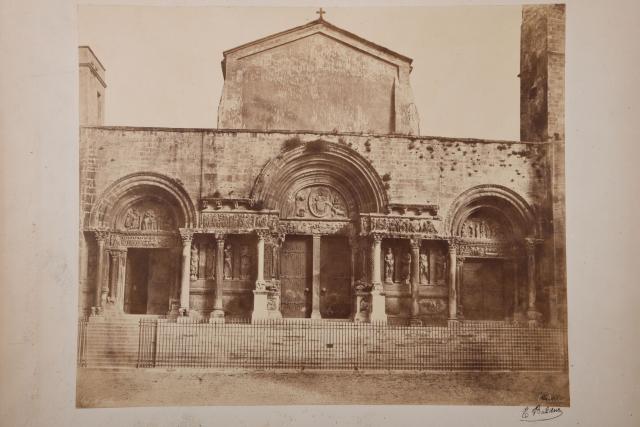
Try LotSearch and its premium features for 7 days - without any costs!
Be notified automatically about new items in upcoming auctions.
Create an alert